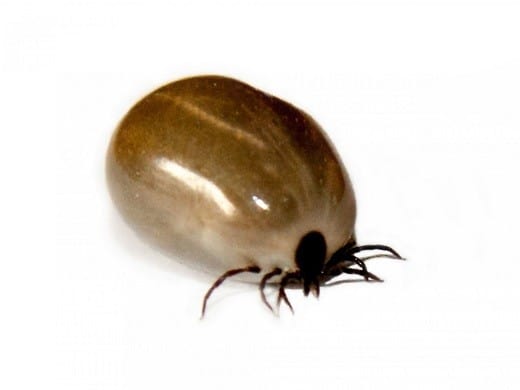
 Is Lyme disease on the rise in Canada? Disease-carrying ticks are becoming an annual concern for residents in provinces across Canada as health officials work to warn people about precautionary measures as they head out into the parks, fields and forests this summer.
Is Lyme disease on the rise in Canada? Disease-carrying ticks are becoming an annual concern for residents in provinces across Canada as health officials work to warn people about precautionary measures as they head out into the parks, fields and forests this summer.
“This black-legged tick is becoming more established,” said Niagara Region Public Health inspector Joe DeGiuli, to the St. Catherine Standard . Last year, 1,825 ticks were turned in to the Region, while they have 813 submissions already in 2019. And whereas 108 of those last year were removed after biting humans, this year’s number is already at 103.
“The best thing you can do is monitor for signs and symptoms,” said DeGiuli. The cooler, wetter weather this spring isn’t necessarily put a damper on ticks, either, as the insects can come out in any temperature above zero. Instances of tick bites and the Lyme disease carried by some have been on the rise in pets, as well. Greg Stevenson, a veterinary physician in Perth, Ontario, told the Ottawa Citizen that his clinic dealt with 40 Lyme-positive cases in pets in 2018 and has seen 22 cases so far in
2019.
“We see ticks almost daily on pets,” says Stevenson.
Last year, Ontario’s Ministry of Health and Long-Term Care released a report from its Lyme Disease and Tick-Borne Illnesses Task Force, which provided ten recommendations for the province, including conducting a review of current clinical practice guidelines surrounding assessment and treatment, establishing collaborative centres of excellence for tick-borne illness and improving of education and awareness across the province.
NDP MPP Michael Mantha recently introduced a motion calling on the Ford government to take action on Lyme disesase by implementing the task force’s recommendations.
Lyme disease on the rise in parts of Canada
“Ontario has the highest number of cases of Lyme disease in the country and the number is growing,” said Mr. Mantha, MPP for Algoma-Manitoulin, to the Manitoulin Expositor . “People are worried about contracting Lyme disease. And too many are already suffering with the debilitating disease.”
There are a number of steps individuals can take by way of prevention, including wearing long sleeves and pants while outside, using bug repellant that contains DEET, searching your clothes and body for ticks after coming in from outside and taking a shower or bath afterwards.
So who is really at risk here? For the most part, it’s pet owners. A 2017 study from the Centers for Disease Control and Prevention in the United States shows that the risk is heightened for owners of pets like cats and dogs, which can easily bring ticks into the home.
“This large evaluation of pet ownership, human tick encounters and tick-borne diseases shows that pet owners, whether of cats or dogs, are at increased risk of encountering ticks and suggests that pet owners are at an increased risk of developing tick-borne disease,” said the study’s authors, whose research is published in the journal Zoonoses and Public Health.
The researchers advocate daily tick checks for all family members and caution to be extra vigilant if you have been in long grass.
Leave a Reply
You must be logged in to post a comment.




 Share
Share Tweet
Tweet Share
Share




Comment